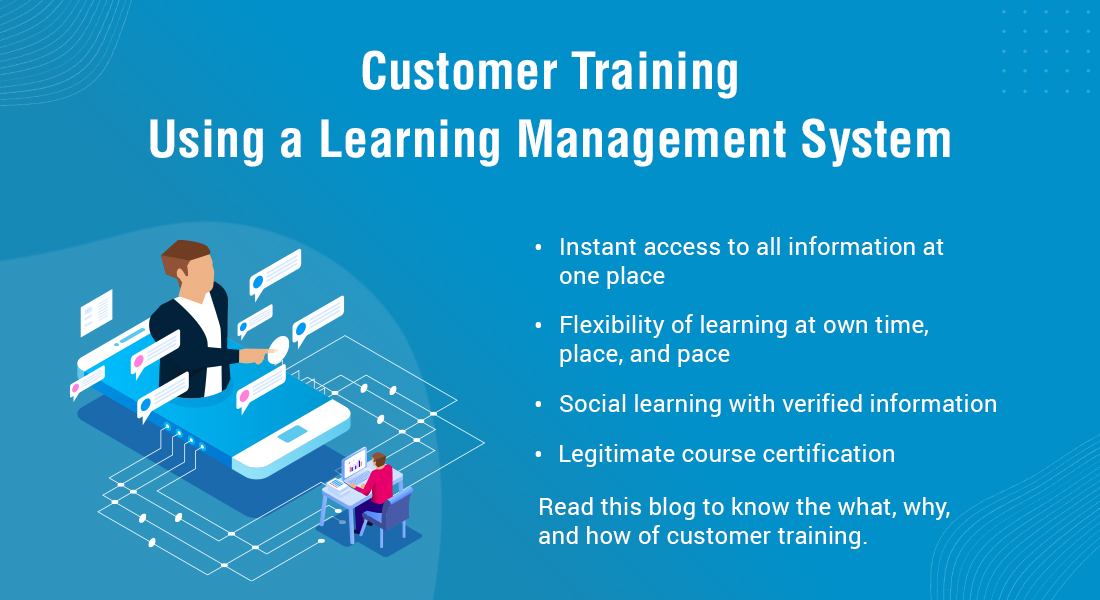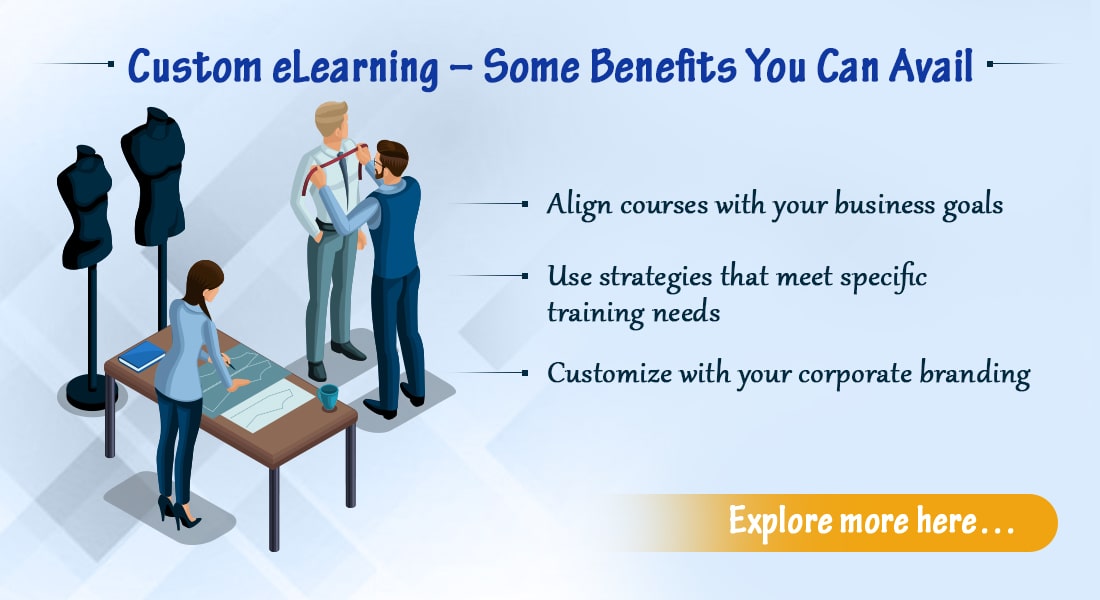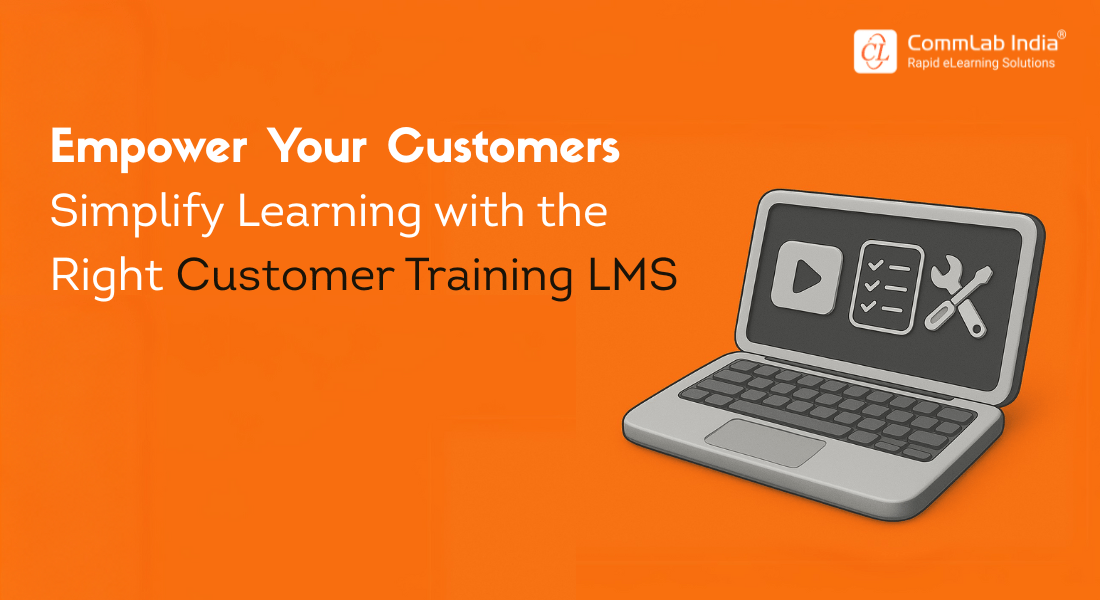What Should You Look for in an LMS for Customer Onboarding?

In corporate L&D, our focus is mostly on training and up-skilling our own employees. But in recent years, a new kind of training is becoming increasingly popular in organizations. No, it’s not a new training method or learning technique but it is for an altogether different audience – the learners are not your employees but your customers. Sounds intriguing? In this blog, we’ll discuss what customer training is, why it is important, and how Learning Management Systems (LMSs) can add value to customer training.
6 Benefits of Using LMS for Customer Training
- Centralized information hub
- Self-paced learning
- Course certification
- Scope for social learning
- Customized multilingual interface
- Feedback, experience tracking & reporting
Explore a new rapid plug n play, highly customizable Learning Management System – Effectus.
Customer Training: What is Its Purpose & Why is It Important?
For any business, big or small, there is one boss who needs to be satisfied, no matter the cost or effort. Wondering who that is? The customer, of course! Especially in today’s world, where there are umpteen options for everything, and customers posting their reviews on social media for everyone to see, keeping them satisfied is very important. Retaining them is equally critical. And customer training is an effective method of ensuring customer satisfaction and retention.
Customer training is all about providing your customers with the information they need to use your product or service and derive value from it. It is a growing trend in B2B (business-to-business) organizations, especially in SaaS (Software as a Service) companies.
Customer training has many benefits for organizations as it:
- reduces customer service interactions and thereby the costs
- ensures better customer onboarding and faster product adoption
- improves customer retention rates
- increases chances of up-sale and cross-sale
- empowers customers with the knowledge needed to use the product or service
Customer training can be directed, self-paced, or a combination of both. But as it is virtually impossible to get all your customers into one location or at a fixed time, synchronous modes of training like classroom training can be ruled out. Self-paced online training is the preferred mode for customer training, with a Learning Management System to make it a success.
Learning Management System for Customer Training
1. Centralized Information Hub
Today nobody has the time or the inclination to read a 300-page complicated instruction manual or guide that quite often gives a throbbing headache after reading. So, what do customers do if they want to know how to operate or use a product or service they have recently acquired? Simple – they Google it! But while that is a quick solution, it may not be very reliable. The Internet is a deep well of information and misinformation and it’s often difficult to tell one from the other. Allowing your customers to depend on the Internet for important information may not be a very good idea.
Now, if you were able to make all the information that the customer may find useful – online manuals, walk-through videos, demos, discussions, etc. – available in a centralized space that can also track your customers’ activities and experiences, wouldn’t that be great? Yes? Well, an LMS will do exactly that.
2. Self-paced Learning
Now, we come to the point of the difference between corporate training for employees and customer training. Unlike your employees, your customers do not work for you; it’s the other way around. What this means is that you can’t schedule training sessions for your customers; nor can you assign a limited time frame for them to access courses and training materials. The learning has to be truly self-paced so that customers can get the information anytime, anywhere. And an LMS will help you make information available for customers that they can refer to at their point of need.

A Bird’s Eye View of What Top-Performing L&D Teams are Doin
- Aligning Learning Strategy with Business Strategy
- Developing Business Skills for the Future
- Investing in the Right Technology
- Much More
3. Course Certification
Like I mentioned before, customer training is especially important and popular in B2B organizations and SaaS companies. Customers often need to be certified on Standard Operating Procedures (SOPs) to be able to use a particular product or service if its function poses a significant risk (physical or financial). Since your customers can come from any part of the world, it is impossible to organize a workshop and train and assess their skills; so, the training is mostly conducted through eLearning courses. And as for the certification, a 21 CFR Part11 Compliant LMS can generate digital certificates that are recognized equivalent to paper-based certification.
4. Scope for Social Learning
In the past decade, social media has changed how we receive and share information. And it will not be wrong to say it is a major contributor to our learning. We humans prefer learning through social interaction, irrespective of who we are and what we are learning. But misinformation is a big challenge that comes as part of learning through social media.
Using discussion boards, chatrooms, and online forums in the LMS will give your customers across the globe all the benefits of social learning as they can interact, discuss, and share their experiences. At the same time, you can minimize the risk of misinformation because you can monitor these message boards and refute user-generated content that isn’t accurate.
5. Customized Multilingual Interface
In today’s globalized world, it is very rare to have customers belonging to the same linguistic and cultural demographic. Most businesses deal with diverse global customers and there is only so much a common business language like English can do to bridge the gap. This makes customer training a bit tricky. But a eLearning translation and a new-age Learning Management System can help you solve this problem. You can simply customize the LMS with a multilingual interface, making customer training a more personalized, effective, and engaging experience.
6. Feedback, Experience Tracking, and Reporting
The ultimate goal of customer training is to retain them as long-term loyalists for your organization. To accomplish that, it is important to know what they think about the training, what their experience has been like, where they found most difficulty, etc., to gain insights into what your customers truly need. You can use the LMS to gather feedback from customers, track their activities, analyse where they are most engaged, what topics they are most interested in, what part of the training they are skipping, etc., and generate reports on it. This will give you actionable insights for you to work on and improve your customer training for the better.
End Note
Customer training can seem like very different from employee training and it is, in many ways. But at the end of the day, whether its customers or employees, you want to make training more accessible, more engaging, and more effective. And an LMS is a very important tool that can make it happen.
If you want more information on how to choose the right LMS, you can go through our free eBook for some tried and tested tips.




![The Learning Management System for Successful Customer Training [SlideShare]](https://blog.commlabindia.com/hubfs/Imported_Blog_Media/learning-management-system-customer-training-slideshare.jpg)
